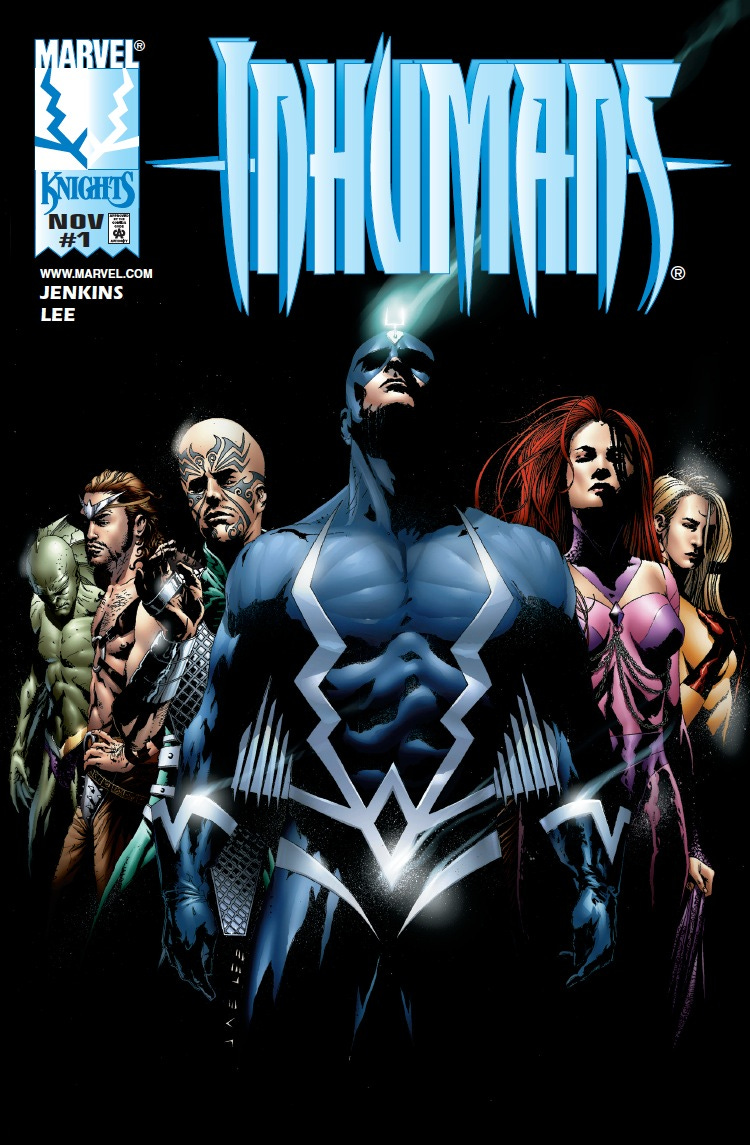Power Action Book Club: Inhumans (Marvel, 1998) 🗯️
Revisiting the Paul Jenkins and Jae Lee masterwork.
Power Action! first played with concept of a book club last fall, with our series on essential Batman stories. Folks seemed to enjoy that six-week program, so we’re going to build on that while trying something a little different this year: one monthly pick. It’s for anyone interested in the occasional nerdy read, with a few question prompts to consider alone or with pals (or within the comment section of this Substack, even).
The first of these monthly picks is Inhumans, 1998’s 12-issue Marvel Comics run penned by Paul Jenkins and illustrated by the brilliant Jae Lee. It’s collected in both physical and digital formats (including Marvel Unlimited).
Someone once asked legendary Marvel editor Tom Brevoort about the difference between mutants like the X-Men and Inhumans, a race of superpowered beings that debuted a couple of years after the former in 1965. He jokingly replied that all Inhumans are left-handed.
A creation of Stan Lee and Jack Kirby, the Inhumans debuted in Fantastic Four #45, before getting their own limited starring comics. Though Homo sapien in their roots, the Inhumans arose from experiments by the alien Kree. They would then become a separate society, with exposure to the mutagenic Terrigen Mist granting them some power or, in other cases, just a deformity that would make them lesser members of society. Brevoort’s joke stems from the fact that, in many way, the Inhumans were quite similar to the X-Men. Maybe that’s why they didn’t have immense success after their fun debut and guest-starring roles in the 1960s and early ’70s. The Inhumans spent much of the ’80s on Marvel’s backburner—occasionally lending a member to one of the imprint’s marquee teams.
But there was always something there, beyond the simply cool concept of its most well-known character and leader: Black Bolt, the silent leader who would level cities if he used his voice.
With the Marvel Knights imprint in 1998, Joe Quesada and Jimmy Palmiotti were tasked with creating a boutique line of comics experimenting with more low-profile characters. Marvel Knights had a similar vibe to Vertigo comics or the burgeoning prestige TV of the time: higher production values with grittier themes. Quesada and Palmiotti worked on a Daredevil title themselves, with Kevin Smith writing; Christopher Priest and Mark Texeria tackled Black Panther; and so on. A Inhumans book was also pitched, resurrecting what had become a relatively obscure title. It was even obscure to Paul Jenkins, the writer they hired who would become the architect of the book. "Doing the Inhumans was Jae's idea; not much of a surprise, really, since I had no idea who the Inhumans were,” Jenkins later told Comic Book Resources. “They sent me three short stories, four pages each. That was all I ever had to work from, which, again, I think works to my advantage. The idea of a teleporting dog with a pitchfork on his head is pure genius."
The 12-issue series was a smash, with the series winning an Eisner Award and leading the team back into the main Marvel Universe due to its popularity. It also solidified Black Bolt’s brother, Maximus, as a villain that deserves more shine. Many compared the book to Alan Moore’s Watchmen, in its ability to both bring political and social analogs into the genre without corniness—and offering a type of grit that Zack Snyder movies only aspire to.
To say more is to give away too much, so I’ll let you tackle the series before this edition’s questions. These questions are intended as prompts for your own discussions or, if you like, in the comment section here.
DO NOT READ THE QUESTIONS BELOW UNTIL YOU’VE READ ALL OF INHUMANS (1998).
The most divisive aspect to this book is a lack of action—particularly in its primary protagonist seemingly sitting on the bench for much of the book. I see it as one of its greatest strengths. What’s your take?
Tachyonic fields play a major role mid-series. Do you see these types of moves as overt Watchmen allusions? If so, are there any others notable throughout your reading?
Jae Lee’s art was seen as groundbreaking at the time. How does it age, in your opinion?
Jenkins did a lot of work to show the varied social castes of the Inhumans’ world. Do you see the comics’ royal family as adequately reckoning with the society they created? Why or why not?
How do you see the socio-political climate of 1998, in particular, reflected in Jenkins’ writing here?
If Jenkins were to revisit the Inhumans, where would you want the series to go, in both its themes and characters?








